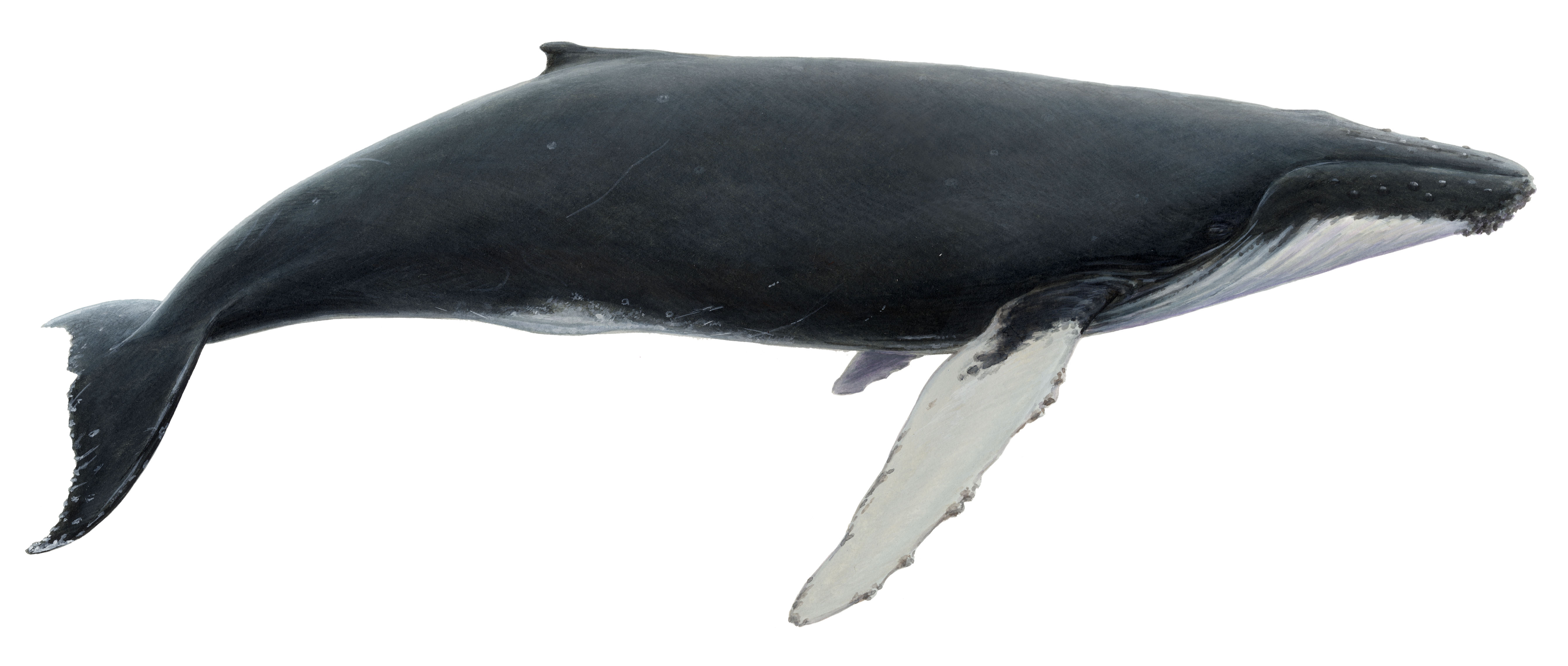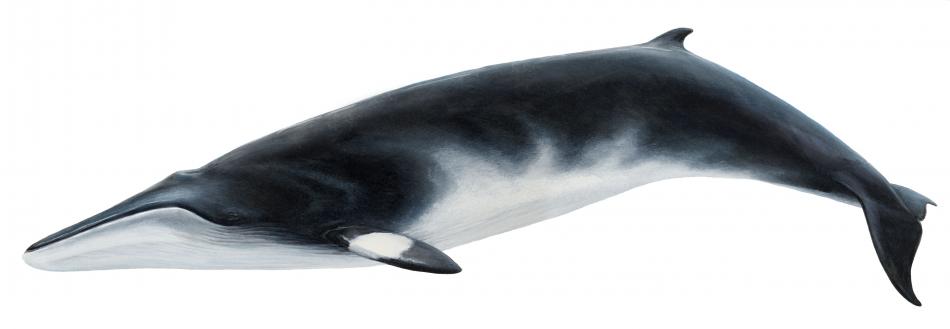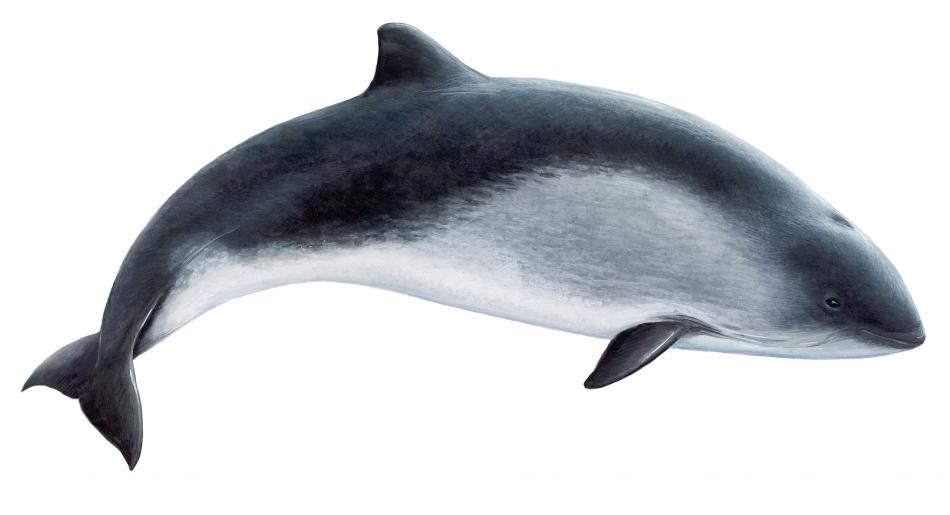
Know before you go:
If you're a first time whale watcher it is perfectly normal that you don't exactly know what to look for, but you should know that whale watching with Elding is a team effort and everyone on board is encouraged to help out. There are a few tips and tricks that can help you identify signs of whales and dolphins from a distance, and a few things to keep in mind when venturing out into open seas.
The number one rule of whale watching in Iceland is to keep warm. There's no fun in staying out on deck in the arctic conditions and not being able to enjoy the sightings to the fullest, so grab a comfortable overall from our cloakroom before doing anything else.
On the highest platform of the boat sits our guide, where they have a good 360° view of the bay. We use the clock system to notify passengers of any sightings, so say for example if a whale is to the right of the boat, that would be 3 o'clock and behind the boat would be 6 o'clock etc. Listen carefully to the information provided throughout the tour and follow the crew's directions.
We never know where the whales and dolphins may pop up, so be ready to scan the horizon from left to right and back again. It is important that you look both far and near and don't forget to look to the back of the boat, it's an area often overlooked. Keep in mind that whales can move quickly and therefore it is easy to miss sightings if you're not paying attention.
The signs of wildlife at sea:
The first indication of a cetacean is usually a blow from afar, but it can also be a splash, dorsal fin or a fluke. Look for anything that breaks the surface, but don't worry if the waves are too high, there are other ways to find wildlife.
If you see a flock of birds sitting on the surface or diving into the water that can often be an indication of schooling fish below which feed both birds and whales. If there are fishing boats around, make sure to keep an eye out in their direction as well.
Once you spot a whale, try and recognise which direction it is headed to and look closely to the area you saw it last. To indicate the sighting to the crew, hold your hand out in clear direction of the whale. Whales can hold their breath for a long time, so don't worry if you don't see it again for a few minutes, it is likely that the whale simply went for a deep dive but will return to the surface again shortly.
Know the different species:
Sometimes it is hard to differentiate between species and therefore it is good to know a few key details about the most common species in the area you are whale watching in. In Reykjavík (Faxaflói bay), the regular species are humpback whales, minke whales, white-beaked dolphins and harbour porpoises. Luckily, these species are all quite different from one another, making it easy for us and for you to identify!

Currently, we know of over 90 different species of Whales, dolphins and Porpoises collectively called cetaceans. These range from the largest animal that has ever lived on our planet the Blue Whale to the smallest the Hectors dolphin. They are found in every one of our oceans and even some of our rivers. Anyone that has been whale watching and seen these magnificent mammals up close can tell you that it is an experience never forgotten and a feeling of amazement and happiness not quite understood.
Our most common whales to look out for:
Humpback whales:

Characteristics: 13-17 metres, black body, bumps on head and jaw, long white pectoral fins, barnacles
Spout: White arch / column up to 15 metres tall
Dorsal fin: V / U shaped with a hump in front
Fluke: Lobed shape, pointy tips, usually white on underside
Behaviour: Curious, slow moving, deep dive with fluke in the air, mainly solo but also seen in groups, sometimes seen lobbing, breaching and rolling
Minke whales:

Characteristics: 7-11 metres ,streamlined body, white patch on pectoral fins, pointy snout
Spout: Low and bushy, often inconspicuous but can be smelled even if not seen
Dorsal fin: Falcate / curved and pointing backwards
Fluke: Broad and pointy, not typically seen when the whale goes for a dive
Behaviour: Can be elusive, quick to surface
White-beaked dolphins:

Characteristics: 2,5-3 metres, white snout, white patches on belly and sides, dark gray body
Spout: Can only be seen under good conditions, they move quickly and don't surface very high out of the water
Dorsal fin: Tall compared to their body size, curved backwards
Fluke: Mostly dark gray, pointy at the ends
Behaviour: Highly sociable, often in groups of 10-20 but can form superpods of 100+, move very quickly, often seen jumping, rolling and riding the waves of boats
Harbour porpoises:

Characteristics: 1,5-2 metres, often confused with dolphins, dark gray on back but lighter on the underside
Spout: Can only be seen under good conditions, not easy to spot from far away
Dorsal fin: Short, gray V / U saped
Fluke: Dark and pointy at the ends
Behaviour: Sociable within the species, mostly elusive, tend to move fast
Whale Watching tips & tricks:
- Scan the horizon.
- From left to right and all around the boat. Make sure to be on high alert as the whales don't tell you in advance when or where they will appear. The back of the boat is often missed, so be sure to cover the whole area, even when everyone else is looking in another direction.
- Be patient.
- Whales are mammals that need air to breathe, so even though they've been diving for a long time, eventually they will find their way back to the surface and that's when you need to be ready. Note that this may take up to 20 min. depending on the species.
- Get a closer look.
- Bring your camera or phone for photography opportunities. Be sure to bring a zoom lens or binoculars to scan the seas and get a good look at the wildlife. Most of our naturalist guides are experienced photographers and can help you with your camera settings if needed. They even take photos during most of our tours which you can request access to via email within 24 hrs.
- Manage your expectations.
- These are wild animals we are working with and therefore they won't show up or perform tricks on our demand. A lot of the time we merely see their backs followed by a dorsal fin, and depending on the species, we sometimes see tails, breaches and other interesting surfacing behaviours as well. Unfortunately we can't guarantee sightings, so be sure to enjoy the ride, take in the landscape and make the most of it while it lasts.
- Learn more.
- Listen to the guide as they explain the different areas we are sailing by and the different species we may encounter. This may help you later on during the tour to identify the species and to pinpoint sightings. Don't be afraid to approach the crew and ask them any questions you may have. Our team consists of highly skilled and experienced people that are happy to assist in any way.
Good luck!
And there you go; a few tips on how to spot whales and dolphins in Iceland! Of course it can happen that we don't see any whales or dolphins, but that is the wildlife aspect of the tour. After all, the tour is set in the wild, not a zoo. However, in case of a non-sighting tour we offer a free return ticket so you can come again as many times as needed until you eventually see some whales or dolphins. This ticket is valid in all places where Elding operates (Reykjavík and Akureyri).




